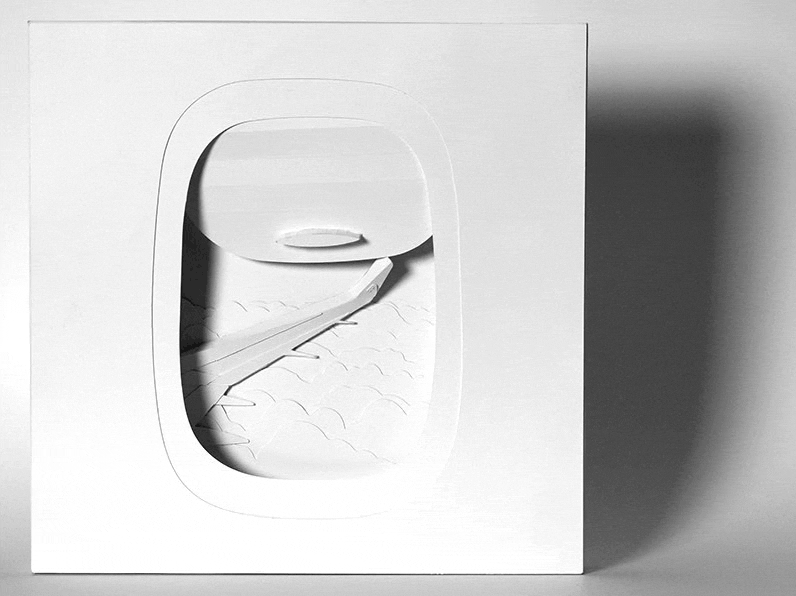
Minimalism was something that always fascinated me. It wasn’t something I’d known about when I first started learning about design, but it intrigued me once I got to college. The idea that you can create the perfect design by adding the smallest square to it or that a design could be white on white seemed otherworldly. It felt rebellious and sophisticated all at once. Little did I know, minimalism played a huge role in my paper sculpture.
When I was asked to make a paper sculpture, I was immediately excited and nervous. I was excited because I love artists like Sabeena Karnik who translate typography into a three-dimensional space by making paper sculptures. I was also nervous because her craft is seamless, and I’m just a student worried about making an awful mess. During my research phase, I realized that paper sculptures take different forms and we’re so used to them in our everyday lives. Pop-up books, for instance, are technically paper sculptures. They’re much more intricate; however, because they combine paper craft with an understanding of engineering and create an interactive piece. I was enamored with that idea and sought to create something myself that was interactive.
I’ve always thought that design’s meant to do something. It feels like if your work doesn’t do anything, you’re just decorating.
My sculpture was inspired by the view I’d see whenever I was going home to Las Vegas. Initially, I wanted to map out the landing course as you’re approaching McCarren Airport, but I felt the clouds simplified the piece and made it a scene everyone’s familiar with – not just me. I was really excited by the idea that this could be a banner ad or email announcement for American Airlines and I wanted to incorporate the logo as a die-cut in the interactive door. Once I started experimenting with the construction, I found out that was entirely impossible.
It was one thing to design the window and layout how the wing of the plane interacts with different elements in the composition, but it was much more difficult to understand how to engineer the paper to do what I needed it to. Making the interactive door compromised different aspects of my design, and ended up being the hardest part of my paper sculpture. I couldn’t die-cut a logo into the door because I had to score it every 1/4 inch. It has to bend according to where it lies on the track system, and the die-cut would’ve made the door too flimsy to move. Not only that, but creating the track system within the frame was another feat. Every piece of paper within the track system that guides the door had to be placed and shaped deliberately. I’d created three different versions that ended in the entire frame ripping, and I found that using less paper to guide my door gave it the freedom it needed to move.
As a student, I’ve never studied engineering, but this sculpture gave me an entirely new appreciation for the profession. Even though I was just manipulating paper, working in a three-dimensional space forced me to think in ways I’m not used to. Adding an interactive element only enriched my experience because I developed a deeper understanding and appreciation for engineers and product designers who problem solve in a three-dimensional space.

